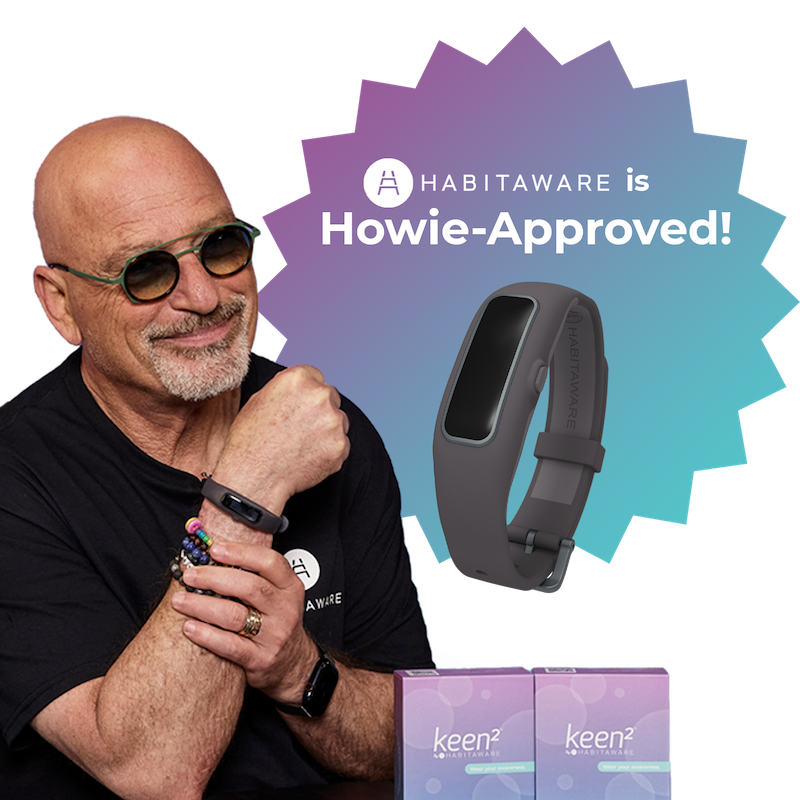Trichotillomania is a body-focused repetitive behavior (BFRB) characterized by the urge to pull out hair from various parts of the body, including the scalp, eyelashes, and eyebrows. Dermatillomania, also known as skin picking disorder, is a BFRB characterized by the urge to pick at one's own skin, often resulting in noticeable damage. Onychophagia, commonly known as nail biting, is a BFRB characterized by the urge to bite or chew one's own nails, cuticles, or surrounding skin.
These conditions affect millions of people around the world, and it can have a significant impact on one's self-esteem and overall quality of life.
Fortunately, there are treatments available for trichotillomania and other BFRBs, namely therapy. You can also take matters into your own hands - or wrists with HabitAware's smart bracelets. HabitAware's wearable technology uses motion-sensing technology to detect when you are engaging in hair pulling, skin picking, nail biting or other unwanted BFRB movements. Our smart bracelet then sends a gentle vibration to remind you to build awareness and take back control.
Managing BFRBs can be a lifelong journey. I say that not to deter you, but to lighten your load of expectation. This is why the idea of relapse is not always helpful when it comes to this condition. The word "relapse" implies that the problem has stopped and then returned after a period of time. But we must remember that BFRBs, like trichotillomania, are a chronic condition, like diabetes, and there is no "stopping" it. Instead, like diabetes, the goal should be to learn the skills to manage it and reduce it.
So, what does managing BFRBs look like? First, it's important to redefine what "relapse" means. If you used to pull out all of your eyebrows in one night, but now only pull out a few hairs, is that a relapse? It depends on your own personal definition. The point is that everyone's journey is different, and it's important to define success and progress for yourself.
In this video, I go into detail about how to reframe relapse.
Second, managing BFRBs means finding your own path. This involves increasing wanted behaviors and reducing unwanted behaviors. But what are wanted behaviors? They are whatever you need at the moment to self-soothe healthily. For some people, this might mean taking a sip of water, going for a walk or taking a few deep breaths. For others, it might mean playing with a stress ball, going to sleep, or practicing mindfulness. Only you can define what a wanted behavior is for yourself.
At HabitAware, we believe in empowering individuals to find their own path towards controlling trichotillomania and other BFRBs. That's why we've created an e-course and behavior change methodology, "Love, Strength & Awareness," that teaches you how to identify and change your behavior patterns.
If you or a loved one is struggling with trichotillomania or another BFRB like skin picking (dermatillomania) or nail biting, know that you are not alone. With the right action plan and mindset, you can learn to manage these conditions and find your own path towards success.
We believe that with the right tools and support, you can learn to manage trichotillomania, dermatillomania and other Body-Focused Repetitive Behaviors and live a fulfilling life. AND we want to help you do so!
wishing you love, strength & awareness,

About Keen2 by HabitAware
 HabitAware makes Keen2, a smart bracelet that helps manage nail biting, hair pulling, thumb sucking, and other subconscious behaviors. Customized gesture detection brings you into awareness and helps you develop healthier habits.
HabitAware makes Keen2, a smart bracelet that helps manage nail biting, hair pulling, thumb sucking, and other subconscious behaviors. Customized gesture detection brings you into awareness and helps you develop healthier habits.



